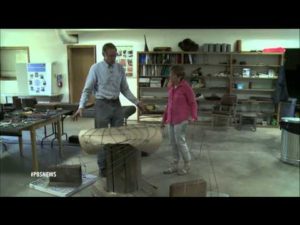Source: geek.com
Published: November 14, 2014

Cement has been called the foundation of modern civilization, the stuff of highways, bridges, sidewalks and buildings of all sizes. But its production comes with a huge carbon footprint. Environmental chemist David Stone was seeking a way to keep iron from rusting when he stumbled upon a possible substitute that requires significantly less energy.
Ferrock is the brainchild of PhD student David Stone, who set out to create a viable alternative to cement, one that could be mixed and poured to make a substance with all the strength and versatility of concrete. In reality, Ferrock is actually quite a bit stronger than Portland cement, by far the leading type in use today. It can take more compression before breaking, and several times more flexing and bending force; that means it could be resistant to the shocks of small Earthquakes or industrial processes, and perhaps even more resilient to weather. But best of all? Ferrock’s hardness comes from the fact that as it dries, the material absorbs and irreversibly binds large amounts of atmospheric CO2.
The why can be inferred somewhat from the name: this is ferrous rock, full of iron. Actually, Ferrock is made with waste steel dust left over from industrial processes, which is usually just discarded. The iron (ferrous) content reacts with CO2 and rusts, forming iron carbonate that is fused into the matrix of the Ferrock; like concrete, when Ferrock dries you can’t just melt it back to the liquid phase. That’s part of what made concrete so revolutionary, that liquid concrete doesn’t harden into hardened concrete, it hardens into rock, with everything that implies.
This article no longer exists at the Source link above. It can be found in the Matteroftrust.org Resource Library.
